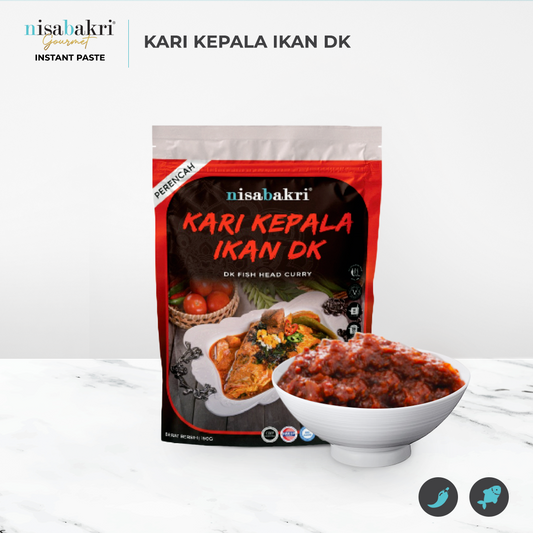A Brief Curry History: From Ancient Times to Modern Cuisine
Curry is a popular dish enjoyed all around the world, but its origins can be traced back to the Indian subcontinent. The term "curry" actually refers to a variety of dishes that are made using a blend of spices, herbs, and other ingredients.
The word "curry" is believed to have been derived from the Tamil word "kari," which means "sauce" or "relish." Over time, curry dishes have been adapted to include a wide range of ingredients, including meat, fish, vegetables, and legumes.
Curry has been a staple of Indian cuisine for centuries, with regional variations in ingredients and cooking techniques. It was also popular among the British, who colonized India in the 18th and 19th centuries, and brought the dish back to Europe. Curry quickly became a popular dish in the UK and spread throughout the British Empire.
Today, curry is enjoyed in many different forms and styles around the world. From the spicy curries of Thailand and Malaysia to the rich, creamy curries of India and the UK, there's a curry dish to suit just about every taste.

What is the Early History of Curry?
The early history of curry can be traced back to ancient India, where the use of spices and herbs in cooking was already well-established. Spices such as ginger, cumin, coriander, and turmeric were used not only for their flavors but also for their medicinal properties.
The first written record of curry dates back to around 1700 BCE in the ancient Indian text called the Rigveda, which mentions a dish called "kari" made with meat, vegetables, and spices. The use of different spices and ingredients in curry varied across different regions of India, and each region had its own unique blend of flavors.
As trade routes opened up between India and other parts of the world, curry began to spread to other countries. Arab traders brought spices like cinnamon and pepper to India, while Indian traders introduced curry to Southeast Asia. By the 16th century, the Portuguese and Dutch had also arrived in India and started to incorporate curry into their own cuisines.
During the British colonial era, curry gained even more popularity, and it became a staple dish in British households. The British also started to create their own versions of curry, incorporating ingredients such as tomatoes and meat to suit their tastes. This led to the creation of dishes such as chicken tikka masala, which is now one of the most popular curry dishes in the UK.
Today, curry has evolved into a global cuisine, with different variations and styles found in countries all around the world. Despite its many adaptations, the use of spices and herbs remains a key component of curry, linking it back to its ancient Indian roots.
How is curry being introduced to Westerners?
Curry was introduced to Westerners through several different avenues. Here are a few key points:
British Colonization
During the British colonization of India in the 18th and 19th centuries, British soldiers and officials were introduced to Indian cuisine, including curry. They brought their love of curry back with them to the UK, where it became a popular dish in British households.
Immigration
As immigrants from India, Southeast Asia, and other curry-loving regions of the world settled in Western countries, they brought their traditional dishes with them. This led to the opening of Indian and Asian restaurants in Western cities, serving up a wide variety of curry dishes to curious customers.
Travel and Tourism
As travel and tourism increased in the latter half of the 20th century, Westerners were exposed to new and exciting cuisines from around the world, including curry. As more people traveled to countries like India, Thailand, and Malaysia, they developed a taste for these flavorful dishes and sought them out when they returned home.
Fusion Cuisine
In recent years, chefs in Western countries have started to incorporate curry flavors into their own dishes, creating a fusion cuisine that blends traditional Western ingredients with spices and techniques from India and other curry-loving regions. This has led to the creation of dishes like curry chicken salad, curry hummus, and even curry-flavored ice cream.
What are the Regional Variations of Curry?
Indian curry is the most well-known type of curry and varies greatly depending on the region of India it comes from. Indian curries can be vegetarian or include meat, fish, or poultry, and often contain a variety of spices, such as cumin, coriander, turmeric, ginger, and chili powder. Popular Indian curry dishes include butter chicken, vindaloo, and tikka masala.
Japanese curry is a popular comfort food in Japan and has a thicker, sweeter flavor than other types of curry. It is made with a roux that is cooked with vegetables and meat, and often includes apples and honey for sweetness. Japanese curry is typically served with rice and is often topped with pickles or fried chicken.
Thai curries are known for their intense spiciness and often include coconut milk for a creamy, rich texture. Thai curries can be made with a variety of meats and seafood, and include ingredients like lemongrass, galangal, and kaffir lime leaves. Common Thai curries include green curry, red curry, and yellow curry.
Malay curry, also known as rendang, is a rich and spicy curry that is popular in Malaysia and Indonesia. It is typically made with beef or chicken that is slow-cooked with a mixture of spices, including turmeric, galangal, and lemongrass, until the meat is tender and the sauce has thickened.
Chinese curry is a fusion of Indian and Chinese flavors and is commonly found in Chinese takeout restaurants in Western countries. Chinese curry often includes ingredients like onions, peppers, and carrots, and can be made with a variety of meats or vegetables. It typically has a milder flavor than other types of curry and is often served with rice.
What are the Health Benefits and Risks of Curry?
Here are some potential health benefits and risks of consuming curry:
Benefits:
- Anti-inflammatory properties: Many of the spices commonly used in curry, such as turmeric and ginger, have anti-inflammatory properties that may help to reduce inflammation in the body and alleviate symptoms of conditions like arthritis.
- Antioxidant properties: Curry contains a variety of spices that are high in antioxidants, which can help to protect the body against oxidative stress and damage from free radicals.
- Digestive health: Some spices in curry, such as cumin and coriander, may help to improve digestive health by stimulating the production of digestive enzymes and reducing inflammation in the gut.
- Brain function: Curcumin, the active compound in turmeric, has been shown to have neuroprotective properties and may help to improve cognitive function and reduce the risk of neurological diseases like Alzheimer's.
- Heart health: Some studies suggest that the anti-inflammatory and antioxidant properties of curry may help to reduce the risk of heart disease by improving blood lipid levels and reducing inflammation in the cardiovascular system.
Risks:
- High sodium content: Many pre-made curry sauces and dishes can be high in sodium, which can contribute to high blood pressure and other cardiovascular issues.
- Allergies: Curry contains a variety of ingredients, some of which may be allergens for certain individuals, such as peanuts or shellfish.
- Gastrointestinal issues: Some spices in curry, such as chili powder, can irritate the gastrointestinal tract and exacerbate symptoms of conditions like irritable bowel syndrome (IBS).
- Interference with medications: Some spices in curry, such as turmeric, may interact with certain medications and affect their effectiveness or cause side effects.
- Weight gain: Some types of curry dishes can be high in calories and fat, which can contribute to weight gain if consumed in excess.
Conclusion
In conclusion, curry has a rich history and is enjoyed in various regions of the world, with different variations and flavors. It offers potential health benefits, such as anti-inflammatory and antioxidant properties, and may help with digestive health, brain function, and heart health. However, there are also risks associated with consuming curry, such as high sodium content, allergies, and gastrointestinal issues.
If you're looking for high-quality curry products, consider trying out Nisabakri Gourmet. They offer a range of authentic and delicious curry pastes, made with natural ingredients and no preservatives. With Nisabakri Gourmet, you can enjoy the rich flavors and health benefits of curry in the comfort of your own home.
FAQ
1. What is the oldest known recipe for curry?
The oldest known recipe for curry is believed to be from a cookbook called "The Art of Cookery Made Plain and Easy" by Hannah Glasse, published in 1747. The recipe is for a spiced meat dish that is called a "currey" in the book.
2. How did curry become popular in the UK?
Curry became popular in the UK in the late 18th and early 19th centuries, when British colonialists in India became accustomed to eating curries and brought the dishes back to the UK. Curry became increasingly popular in the UK over time, with the first curry houses opening in the 1800s and the dish becoming a staple of British cuisine by the mid-20th century.
3. What are some common misconceptions about curry?
One common misconception about curry is that it is always extremely spicy or hot. While some types of curry can be very spicy, there are many milder varieties as well. Another misconception is that all curries are Indian, when in fact there are many different types of curry from a variety of regions and countries.
4. Can you trace the influence of curry on any particular US regional cuisine?
While curry is not a traditional part of any particular US regional cuisine, its influence can be seen in fusion dishes that incorporate elements of both traditional American and international cuisines. For example, some food trucks and restaurants may serve "curry tacos" or "curry burritos" that combine the flavors of Mexican and Indian cuisines



